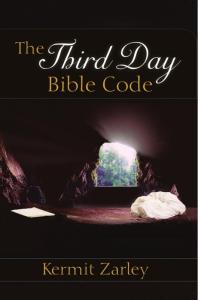 There is a striking parallel in ancient history in which the prophets Jesus and Jeremiah similarly prophesied two separate attacks on their own nation of Israel that occurred forty years later, resulting in the destruction of Jerusalem. It shows God operates by the numbers.
There is a striking parallel in ancient history in which the prophets Jesus and Jeremiah similarly prophesied two separate attacks on their own nation of Israel that occurred forty years later, resulting in the destruction of Jerusalem. It shows God operates by the numbers.
God Calls Jeremiah
God called Jeremiah in about 627 B.C. at the young age of about twenty years. and he said to him, “I appointed you a prophet to the nations” (Jeremiah 1.5 NRSV). Jeremiah relates, “Then the LORD said to me: Out of the north disaster shall break out on all the inhabitants of the land” of Israel (v. 14).
The word of the LORD came to Jeremiah other times in his life about this assault to occur on Israel by enemies invading from the north, such as, “Raise a standard toward Zion, flee for safety, do not delay, for I am bringing evil from the north, and a great destruction” (4.6). And later God said through Jeremiah, “Flee for safety, O children of Benjamin, from the midst of Jerusalem! … for evil looms out of the north” (6.1). Likewise, “Thus says the LORD: See, a people is coming from the land of the north, a great nation is stirring” (v. 22). And God later spoke again through Jeremiah, saying, “Hear, a noise! Listen, it is coming—a great commotion from the land of the north to make the cities of Judah a desolation” (10.22).
The Babylonian Captivity
The reason for these prophecies against Israel, particularly Jerusalem, was the peoples’ departure from their God, largely by means of making and worshipping idols and celebrating it on mountains by often engaging in sexual relations (e.g., Jeremiah 5.7). Because of it God prophesied through Jeremiah, “I am going to bring upon you a nation from far away, O house of Israel. It is an enduring nation, it is an ancient nation” (v. 15). What nation what is it? It was the Babylonian Empire, and their attack came from the north of Israel.
This brutal attack and destruction of Jerusalem occurred in 587 B.C., about forty years after Jeremiah began prophesying about it. King Nebuchadnezzar of Babylon attacked Israel with his ferocious army and destroyed Jerusalem. He took captive its elite and brought them to Babylon to begin The Exile, also called the Babylonian Captivity, which lasted seventy years.
Jesus’ Seven Woes Against Jerusalem
After Jews returned from Babylon and restored their nation in their ancestral land, centuries later Jesus of Nazareth prophesied likewise about an assault to occur on his generation, which is often regarded in the Bible as forty years. During Passion Week in Jerusalem, thus shortly before the Roman execution of Jesus by crucifixion, he uttered seven devastating woes against the religious leaders at Jerusalem, introducing these prophecies repeatedly by saying, “Woe to you, scribes and Pharisees, hypocrites!” (Matthew 23.13, 15-16, 23, 25, 27, 29).
Jesus concluded this message of doom by saying, “Truly I tell you, all this will come upon this generation. Jerusalem, Jerusalem, the city that kills the prophets and stones those who are sent to it! How often have I desired to gather your children together as a hen gathers her brood under her wings, and you were not willing! See, your house is left to you, desolate” (Matthew 23.37-38).
“Not One Stone Will Be Left Upon Another”
We read next, “As Jesus came out of the temple and was going away, his disciples came to point out to him the buildings of the temple. Then he asked them, ‘You see all these, do you not? Truly I tell you, not one stone will be left here upon another; all will be thrown down'” (Matthew 24.1-2).
The first century Jewish historian Josephus reported that many of those stones of the temple were made of limestone, quarried from far away mines, that were thirty or forty feet long and about ten feet wide and high. Due to their gigantic size, how could Jesus possibly have been right in predicting, “not one stone will be left here upon another; all will be thrown down”?
Historians and Christian theologians generally believe Jesus was crucified in 30 A.D. In the year 66, the nation of Israel rose up against its subjugation by the Roman Empire in what became the First Jewish Revolt. It ended in 70 A.D., forty years after Jesus had made his pronouncements of woe against Israel and its religious leaders. The Roman armies attacked Israel from the north and destroyed Jerusalem and its temple.
Going for the Gold
During Rome’s destruction of Jerusalem, an amazing thing happened that proved Jesus’ prophesy right about the stones that I wonder if anyone imagined was possible. Josephus further reports that, even though the Roman armies likely did not intend to destroy Jerusalem’s temple, fires broke out there that caused gold casings covering various temple structures above to melt. This large quantity of melted gold seeped down through the crevices between the large stone structures of the buildings. It caused Roman soldiers to “go for the gold.” That is, they expended great efforts in removing the stones to gather up the gold.
Going by the Numbers, Forty Years Later
Thus, both Jeremiah and Jesus predicted separate destructions of Jerusalem and its temple, and each time they occurred about forty years later. As I tell in my book, The Third Day Bible Code (pp. 48-65), there is a cryptic numerology in the Bible which reveals that often God does big things with humans, especially his chosen people Israel, by the numbers so to speak: oftentimes three, seven, forty, and seventy.
[For further study on this subject, see Ezekiel 38-39 about the final Antichrist, “Gog,” who will lead the nations’ militaries from “the north” to attack the nation of Israel in the last days of this age which will be Israel’s greatest devastation of all time.]













